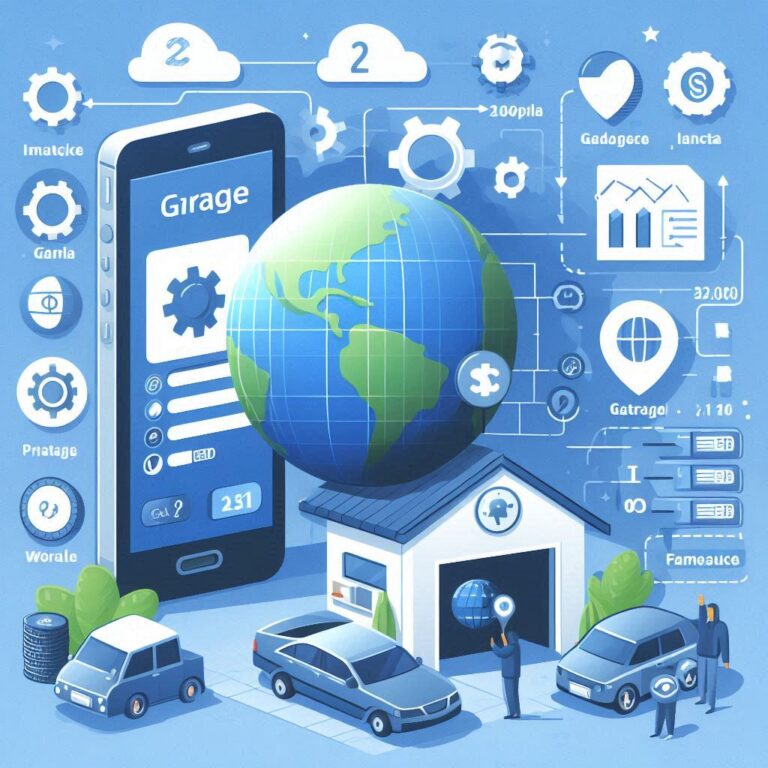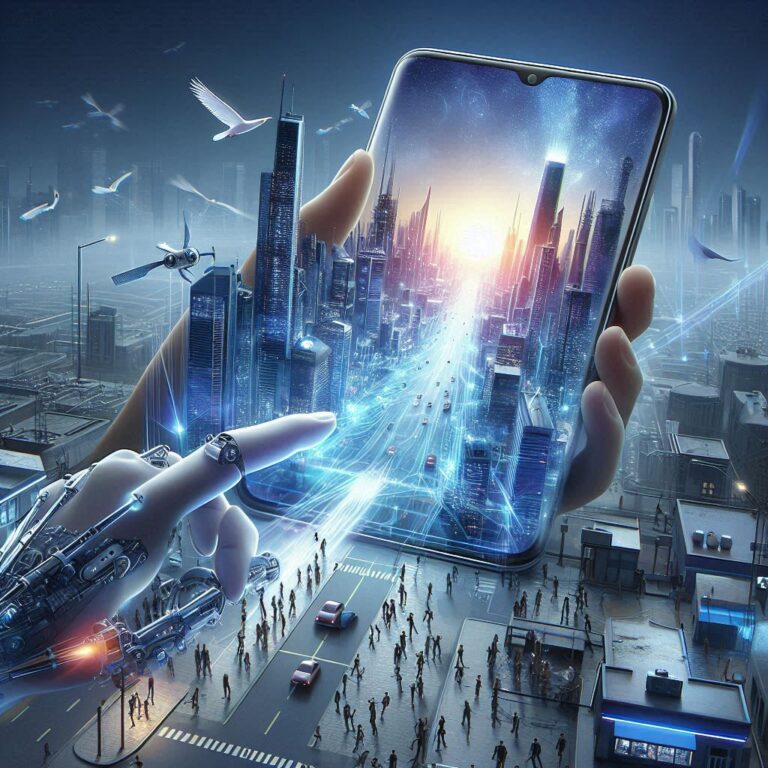
Introduction
Tech giants envision future beyond smartphones For over a decade, smartphones have been the cornerstone of technological innovation, shaping how we communicate, work, and interact with the world. These pocket-sized devices have revolutionized industries, from entertainment to finance, and have become indispensable in modern life. However, as the smartphone market reaches saturation and incremental upgrades yield diminishing returns, tech giants like Apple, Google, Meta, and emerging players like xAI are looking beyond the smartphone era. They are envisioning a future where new devices, interfaces, and technologies redefine human-computer interaction. This article explores the visions of these tech giants, the technologies they are betting on, and the implications for the future of consumer technology.
The Smartphone Plateau
Tech giants envision future beyond smartphones Smartphones have reached a point of maturity where significant breakthroughs are becoming harder to achieve. Annual releases from major manufacturers often focus on marginal improvements—faster processors, better cameras, or slightly refined designs. According to a 2024 report by IDC, global smartphone shipments have plateaued, with only a 1.5% growth rate projected for the next five years. Consumers are holding onto devices longer, with upgrade cycles extending to three to four years, as the incentive to upgrade diminishes.
This stagnation has pushed tech giants to explore new frontiers. The question is no longer about making a better smartphone but about what comes next. From augmented reality (AR) glasses to brain-computer interfaces, the race is on to create the next paradigm-shifting platform.
Emerging Technologies Shaping the Future
1. Augmented Reality (AR) and Virtual Reality (VR)
Tech giants envision future beyond smartphones AR and VR are at the forefront of the post-smartphone vision. Apple’s Vision Pro, launched in 2023, marked a significant step toward mainstreaming mixed reality. Priced at $3,499, the Vision Pro blends AR and VR, offering immersive experiences for work, entertainment, and social interaction. Apple describes it as a “spatial computer,” signaling a shift from traditional screens to 3D environments. The device uses advanced sensors and eye-tracking technology to create seamless interactions, allowing users to manipulate digital objects in real-world spaces.
Tech giants envision future beyond smartphones Meta, meanwhile, has doubled down on its metaverse ambitions. The Meta Quest series continues to evolve, with the Quest 3S (released in 2024) offering improved performance at a lower price point. Meta’s vision extends beyond gaming, with plans to integrate AR glasses into everyday life. In a 2024 keynote, Mark Zuckerberg emphasized “ubiquitous computing,” where lightweight AR glasses replace smartphones for tasks like messaging, navigation, and content consumption.
2. Wearable Devices and Smart Glasses
Tech giants envision future beyond smartphones Smart glasses are emerging as a strong contender to succeed smartphones. Google, which pioneered wearable tech with Google Glass in 2013, is revisiting the concept with updated designs. Recent patents filed by Google in 2025 suggest a focus on lightweight, AI-powered glasses that integrate with its Gemini AI model. These glasses could provide real-time translations, contextual information, and voice-activated controls, reducing reliance on handheld devices.
Snap Inc., known for Snapchat, has also made strides with its Spectacles series. The 2024 iteration of Spectacles offers AR overlays for social media and gaming, targeting younger audiences. Unlike bulky VR headsets, these glasses are designed for all-day wear, blending style with functionality.
3. Brain-Computer Interfaces (BCIs)
Perhaps the most ambitious vision comes from companies like Neuralink, backed by Elon Musk. Neuralink aims to create brain-computer interfaces that allow direct communication between the human brain and digital systems. In 2024, Neuralink achieved a milestone with its first human implant, enabling a patient to control a computer cursor using thought alone. While still in early stages, BCIs could eventually replace smartphones by enabling seamless interaction with technology through neural signals.
Other companies, like Meta, are exploring non-invasive BCIs. Meta’s wrist-based neural interface, demonstrated in 2023, uses electromyography (EMG) to translate nerve signals into digital commands. Such technologies could eliminate the need for physical devices altogether, allowing users to interact with digital environments using gestures or thoughts.
4. Artificial Intelligence and Voice Interfaces
AI is a cornerstone of the post-smartphone future. Tech giants are integrating advanced AI models into new form factors to create more intuitive user experiences. Google’s Gemini and xAI’s Grok are examples of AI systems designed to understand and respond to complex user queries. These models could power voice-activated devices that replace smartphones for tasks like scheduling, navigation, or content creation Tech giants envision future beyond smartphones.
Amazon’s Alexa and Apple’s Siri are evolving into more proactive assistants. In 2025, Amazon introduced the Echo Frame, a pair of smart glasses with Alexa integration, allowing users to access information hands-free. Similarly, Apple is reportedly working on a Siri-powered home hub to serve as a central control point for smart homes, reducing reliance on iPhones.
5. Foldable and Flexible Displays
While still tied to the smartphone form factor, foldable and flexible displays are bridging the gap to new devices. Samsung’s Galaxy Z Fold and Flip series have gained traction, with 2024 models offering improved durability and multitasking capabilities. These devices hint at a future where screens can adapt to various forms, potentially leading to wearable displays or rollable screens that integrate into clothing or accessories.
The Role of Connectivity: 6G and Beyond
The transition to a post-smartphone world relies heavily on advancements in connectivity. 6G, expected to roll out by 2030, promises ultra-low latency and massive bandwidth, enabling seamless integration of AR, VR, and IoT devices. Tech giants are investing heavily in 6G research, with companies like Nokia and Qualcomm leading early trials. This infrastructure will support always-on, cloud-based computing, where devices like AR glasses or BCIs rely on real-time data processing in the cloud.
Challenges in Moving Beyond Smartphones
1. User Adoption and Behavior Change
Tech giants envision future beyond smartphones are deeply ingrained in daily life, and convincing users to adopt new devices will be challenging. AR glasses, for instance, must overcome social stigma and privacy concerns. Early iterations of Google Glass faced backlash over privacy issues, as users worried about being recorded without consent. Tech giants must address these concerns through transparent policies and user-friendly designs.
2. Cost and Accessibility Tech giants envision future beyond smartphones
Tech giants envision future beyond smartphones High costs remain a barrier. Apple’s Vision Pro, while groundbreaking, is prohibitively expensive for most consumers. Similarly, Neuralink’s BCI technology is years away from being affordable or widely available. Tech giants must find ways to scale production and reduce costs to make these technologies accessible to a broader audience.
3. Battery Life and Hardware Limitations
Tech giants envision future beyond smartphones New devices like AR glasses and BCIs require significant computational power, which poses challenges for battery life and heat dissipation. Current lithium-ion batteries struggle to meet the demands of always-on, high-performance devices. Innovations in battery technology, such as solid-state batteries, will be critical to the success of these new platforms.
4. Privacy and Ethical Concerns
The shift to immersive technologies raises significant privacy and ethical questions. AR glasses and BCIs collect vast amounts of personal data, from eye movements to neural activity. Tech giants must navigate complex regulatory landscapes and build trust with consumers. For instance, Meta’s metaverse ambitions have faced scrutiny over data security, prompting the company to invest in end-to-end encryption for its platforms.
The Competitive Landscape
Tech giants envision future beyond smartphones The race to define the post-smartphone era is highly competitive. Apple’s ecosystem and brand loyalty give it an edge in premium devices like the Vision Pro. Google’s expertise in AI and cloud computing positions it well for lightweight, AI-driven wearables. Meta’s focus on social and immersive experiences makes it a leader in the metaverse. Meanwhile, companies like xAI are pushing the boundaries of AI, potentially powering the next generation of devices.
Emerging players, such as startups in the BCI space, are also gaining traction. For example, Synchron, a Neuralink competitor, has made strides in non-invasive BCIs, securing FDA approval for human trials in 2024. These smaller players could disrupt the market by offering more accessible or specialized solutions.
Implications for Society
The shift beyond smartphones will have profound implications for society. Work environments could become more flexible, with AR enabling virtual offices that blend physical and digital spaces. Education could be transformed through immersive learning experiences, allowing students to explore virtual environments or simulations. Entertainment will evolve, with VR and AR offering new ways to experience games, movies, and live events Tech giants envision future beyond smartphones.
However, these changes also raise concerns about digital addiction, social isolation, and the digital divide. If new technologies remain expensive, they could exacerbate inequalities, leaving some populations without access to the benefits of the post-smartphone era.
The Road Ahead
Tech giants envision future beyond smartphones are betting on a future where smartphones are no longer the primary interface for interacting with technology. While AR glasses, BCIs, and AI-driven devices are still in their infancy, they represent the next frontier of innovation. The success of these technologies will depend on overcoming technical, social, and ethical challenges while delivering compelling user experiences.
As we move toward 2030, the lines between physical and digital worlds will continue to blur. The companies that can balance innovation with accessibility and trust will shape the future of consumer technology. The smartphone era may be nearing its end, but the possibilities for what comes next are limitless Tech giants envision future beyond smartphones.
Conclusion
Tech giants envision future beyond smartphones the vision of a post-smartphone future is both exciting and complex. Tech giants are investing billions in AR, VR, BCIs, and AI to create the next generation of devices. While challenges remain, the potential to transform how we live, work, and connect is immense. As these technologies mature, they will redefine our relationship with technology, ushering in an era where the smartphone is just one part of a much larger, more immersive digital ecosystem.


